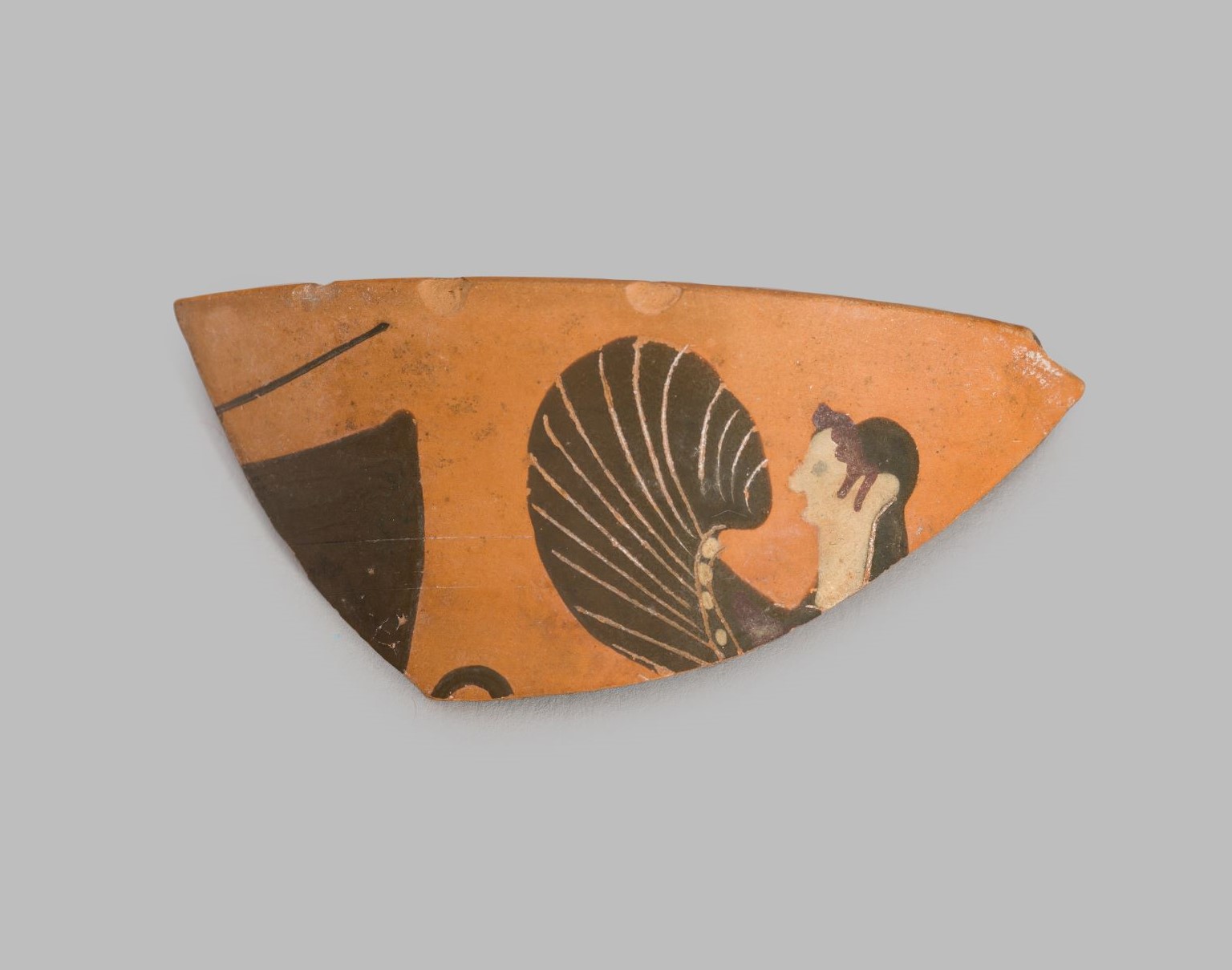
Fragment of the rim of a Kyathos [Gr9]
Athenian Black-Figure, 520-510 BC
Painted terracotta (h. 3.2 cm, w. 7 cm)
On the left, the corner of an eye and eyebrow line; on the right, the head and wing of a sphinx.
This fragment formed part of the rim of a kyathos, a ladle used to serve wine from a mixing bowl known as a krater. This is indicated by the thickness of the rim, the lack of a lip, and the steep angle of the fragment. Kyathoi were briefly popular in the late 6th century, and a large number of black-figure examples survive, but they seem to have fallen out of fashion around 500 BC.
The sphinx was a mythical monster with the head of a woman, the body of a lion, the wings of an eagle, and the tail of a snake. White pigments are used for the flesh of the sphinx, and red has been added to her hair and the inner part of the wing. Lines incised through the paint and into the clay beneath divide the wing into sections.
Literature: J. Falconer and T. Mannack, Corpus Vasorum Antiquorum: Great Britain, Fascicule 19: Winchester College (Oxford, 2002), p. 3, plate 2.7; Winchester College Memorial Buildings: Department of Classical Art (Winchester, 1909), p. 17 (no. 44.1)
Provenance: Gift of B.J.M. Dumas before 1909
Location: Treasury, Gallery 3